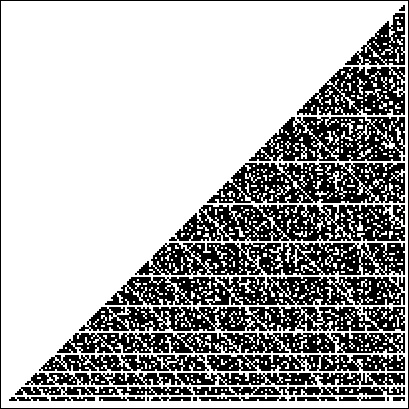If there is no integer such that
i.e., if the congruence (35) has no solution, then is said to be a quadratic nonresidue (mod
). If the congruence (35) does have a
solution, then
is said to be a quadratic residue (mod
).
In practice, it suffices to restrict the range to , where
is the floor function,
because of the symmetry
.

The following table summarizes the quadratic nonresidues for small (OEIS A105640).
| quadratic nonresidues | |
| 1 | (none) |
| 2 | (none) |
| 3 | 2 |
| 4 | 2, 3 |
| 5 | 2, 3 |
| 6 | 2, 5 |
| 7 | 3, 5, 6 |
| 8 | 2, 3, 5, 6, 7 |
| 9 | 2, 3, 5, 6, 8 |
| 10 | 2, 3, 7, 8 |
| 11 | 2, 6, 7, 8, 10 |
| 12 | 2, 3, 5, 6, 7, 8, 10, 11 |
| 13 | 2, 5, 6, 7, 8, 11 |
| 14 | 3, 5, 6, 10, 12, 13 |
| 15 | 2, 3, 5, 7, 8, 11, 12, 13, 14 |
| 16 | 2, 3, 5, 6, 7, 8, 10, 11, 12, 13, 14, 15 |
| 17 | 3, 5, 6, 7, 10, 11, 12, 14 |
| 18 | 2, 3, 5, 6, 8, 11, 12, 14, 15, 17 |
| 19 | 2, 3, 8, 10, 12, 13, 14, 15, 18 |
| 20 | 2, 3, 6, 7, 8, 10, 11, 12, 13, 14, 15, 17, 18, 19 |
The numbers of quadratic nonresidues (mod ) for
, 2, ... are 0, 0, 1, 2, 2, 2, 3, 5, 5, 4, 5, 8, 6, 6, ...
(OEIS A095972).
The smallest quadratic nonresidues for , 4, ... are 2, 2, 2, 2, 3, 2, 2, 2, 2, 2, 2, 3, 2, 2, 3,
2, 2, ... (OEIS A020649). The smallest quadratic
nonresidues for
,
3, 5, 7, 11, ... are 2, 2, 2, 3, 2, 2, 3, 2, 5, 2, 3, 2, 3, ... (OEIS A053760).
If the extended Riemann hypothesis is true, then the first quadratic nonresidue of a number (mod ) is always less than
(Wedeniwski 2001) for
.
The following table gives the values of such that the least quadratic nonresidue is
for small
.